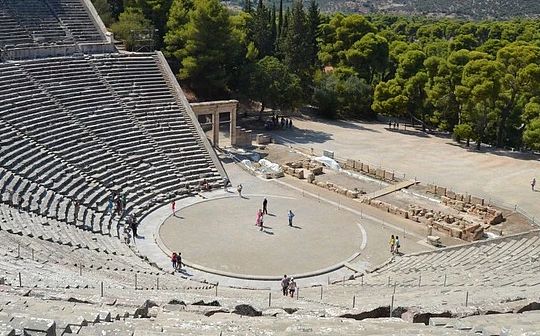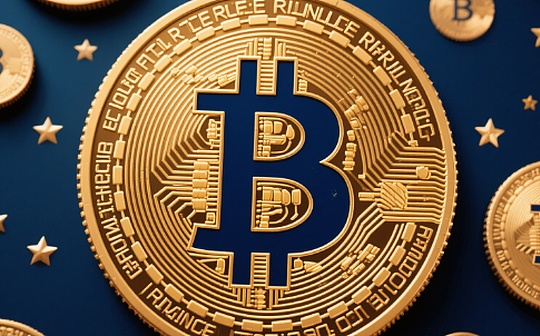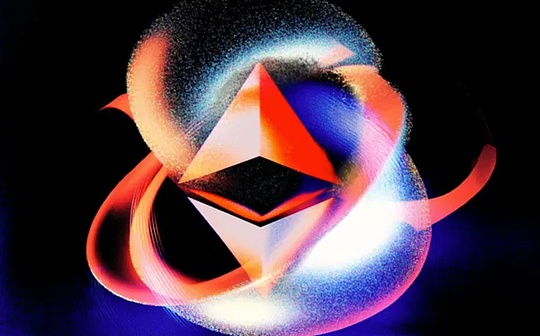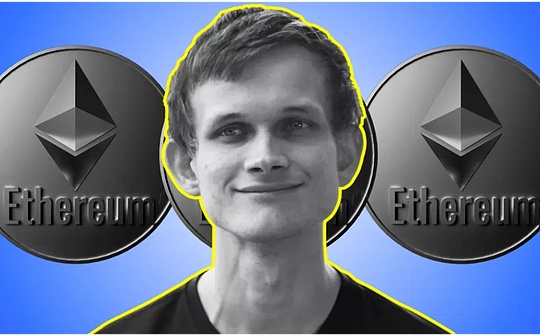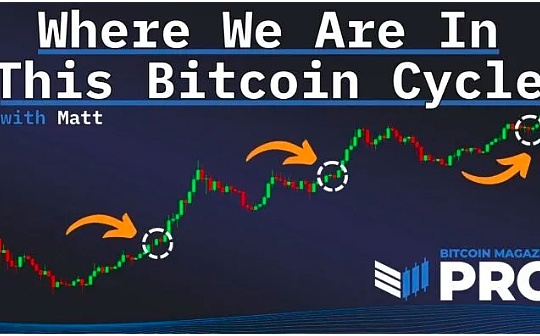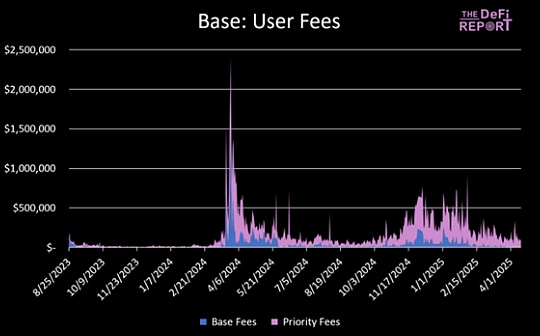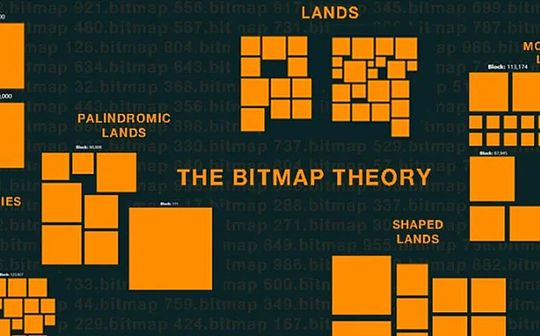
Source: LXDAO
This articleLXDAO Member HoweWritten, let everyone know the ins and outs of the BTC asset issuance plan through the form of timeline. Before reading, you can first look at the BTC historical development line and BTC asset issuance plan development timing map, and it is better to cooperate with the reading effect.
Foreword
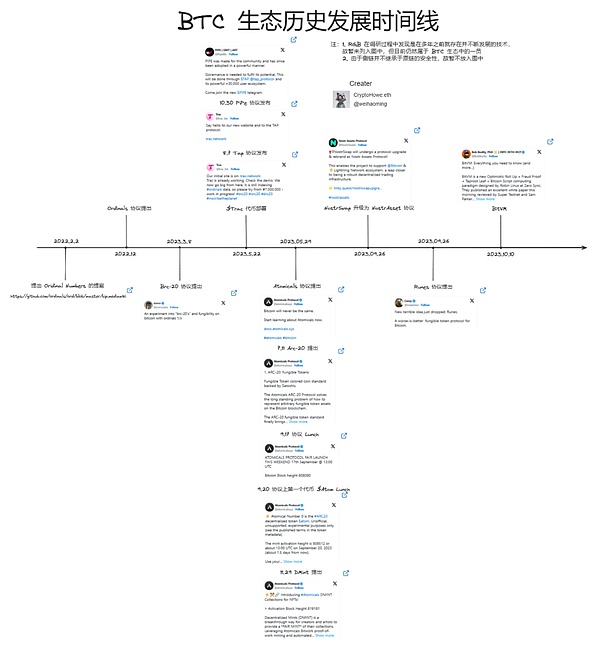
BTC historical development line
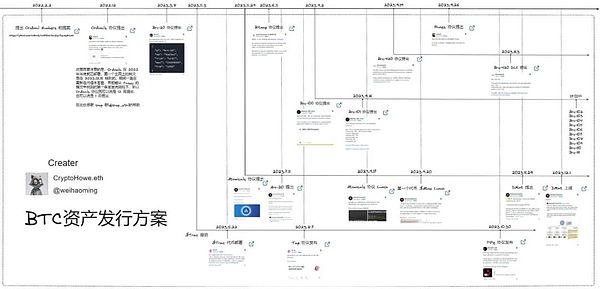
BTC asset issuance plan development timeline
At the same time, this article refers to more articles. During the reference and investigation, the author found that individual articles may have errors for some agreements/items. Therefore,Thanks.
Chapter 命 — The gear of fate begins to rotate
“1” Ordinal Numbers
Many of the existing articles start from the Ordinals protocol, but in the official documentation of Ordinals, the first thing to mention is the Ordinal Numbers theory. From this, it can also be inferred that casey should also get some inspiration from it to create Ordinalsprotocol.
As we all know, the smallest unit in the Bitcoin world is Sat, and the Ordinal Numbers theory can be simply understood as artificially numbered these SAT.From the motivation part of the BIP proposal, we can summarize the theory to provide Bitcoin with a method that can be used as a stable identifier to prevent ownership transfer or key rotation, and there is no need to change the Bitcoin network.
Of course, this theory also has some objections. For example, it will reduce the privacy of users, increase the size of the UTXO set, dust attack, etc. For specific content, please refer to the BIP proposal.
“2” Ordinals protocol
Protocol proposal
The Ordinals protocol was proposed and released by Casey. He put forward the following ideas:
“Can we arrange these” Cong “in a certain order and assign them a order between 0 and 2,100,000,000,000,000, and then connect them to other information: pictures, text, videos, and even a string of code.As a result, each Cong has become unique and irreplaceable.This is equivalent to allowing Bitcoin to have the ability to create NFT.”
The Ordinals protocol was deployed at the end of 2022. The first inscription on the first main network was at 2022.12.14 UTC 2ABF7CED0A85D692E442799i0), during this period, the protocol has been updated iterative but not didFor official announcements, the first official announcement that can be found from Casey’s Twitter is as follows, so the Ordinals agreement can be considered as proposed in December or in January.(I also want to thank the clues provided by Brother SHEP) here)
Characteristics
1. SAT number and division of rarity
Human beings are natural collectors. Since Ordinal Numbers is artificially numbered SAT, why not give these SAT a division of heights, so there is a distinction between scarcity.There are currently 6 types of rarity:
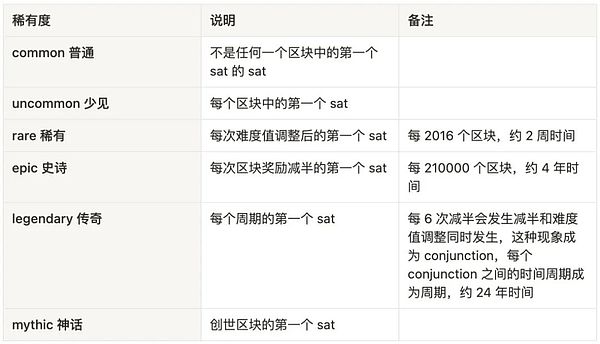
This rarity is similar to what we said in real life in real life. “Leopard banknotes,”, “” linked banknotes “, etc., are essentially banknotes. The actual value is the face value of the banknote, but because people have given it given to itIts special meaning is that with higher collection value, there is a premium, that is, we often say “consensus generate value”.
The Ordinals protocol is given a specific rules serial number to each SAT and tracked in the transaction. It also allows anyone to add additional data such as image (IMAGE), text (Video), audio (video), video (Video),Audio) and so on.At that time, the early players created NFT above. The founder Casey’s initial positioning of it was also wanted to store some eternal things on Bitcoin, the oldest and most consensus chain.So for a period of time, many people will equate Ordinals and “Bitcoin NFT”.Now we can still see them in Unisat Wallet.

2. Advanced transaction
In order to ensure that the SAT with a serial number does not appear chaotic during the transaction, the advanced method of transaction is adopted.Here is a quoting Mr. Wang Yishi’s article example (https://yishi.io/a-beginner-guide-to-the-rdinals-protocol/) to explain this feature:
In the figure below, there are two INPUT on the left, and the address 1 and address 2 have 5 Cong. In this transaction, 4 Cong was sent to an address at the beginning of a 3opz. In addition, 1 Cong was paid to the miners as a miner.
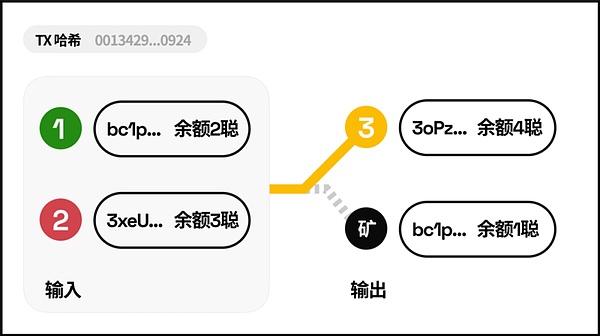
Source: https://yishi.io/a-Beginner-guide-to-the-rdinals-protocol/
Assuming that in the above transactions, we secretly use the ORD protocol to arrange an identity (serial number) for each Cong, then after the transaction is completed, the 4-nickn Cong O-GT; D of the address 1 and the address 2 runs to the address to the address.3 There, the last Cong gave the miners.
The so -called “advanced first out” means that each Cong’s number sorting is determined by its index in the transaction output.For example, in the transaction output in the figure below, the address 3 is arranged in front of the miner’s address. Then Cong, who turns over from the address 1 and address 2, first inherit the address 3, and then the miner address.
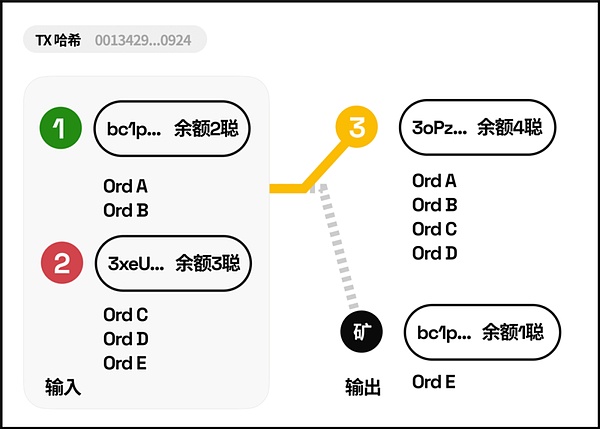
Source: https://yishi.io/a-Beginner-guide-to-the-rdinals-protocol/
Protocol
For friends who know Bitcoin more, they all know that Bitcoin has existed as an electronic currency system as a point -to -point electronic currency system. The programming language used is a complete script language of Turing. Therefore, it is almost impossible to achieve some complex functions. It is almost impossibleThe two major updates of BTCs in 17 and 21 have enabled us to achieve some complex logic functions on BTC.

Source: https://twitter.com/blockpunk2077/status/171932167698771801
Based on the premise of the above development, the Ordinals protocol has written its inscription content into the Taproot script and through UTXO to achieve the effect of viewing and transfer.Since the cost of Taproot script can only be carried out from the existing Taproot Outputs, the submission/revealing two stages are used to achieve inscriptions.First of all, in the submission of the transaction, we need to create a Taproot Output containing the inscription content. Secondly, in the revealed transaction, the submitted transaction was costly created before revealing the content of the inscription on the chain. In this process, we still needA series of serialization of the content of the inscription:
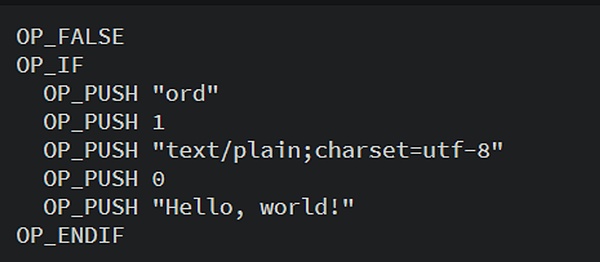
Source: https: //docs.ordinals.com/inscriptions.html
Then if you explain it here, it is equivalent to you initiating a WeChat transfer. In the process of transfer, we need to note that the content of the inscription you created in Taproot Output will then send this transfer transfers and send this transfer.Go out ** (spending off the transaction), then after the sending is completed, we can let the other party see the content you stated in your remarks (revealed the transaction) ** in the chat box **.If this transfer is not written or canceled, the content of this inscription will not be on the chain.

CHAPTER II -BTC Ecological Assets issued a hundred flowers
“1” BRC-20 protocol
Protocol proposal
After the Ordinals protocol came out, early players were playing NFT, while anonymous developer Domo released an experimental standard at 2023.3.8-the BRC-20 protocol improved based on the Ordinals protocol and officially deployed the first BRC-20 $ 20 $Ordi, the protocol allows anyone to issue token in the Bitcoin network, similar to the ERC-20s to the Ethereum.
https://twitter.com/domodata/status/16336589746855168
Notice:
1. Domo’s earliest tweets about BRC-20 are 2023.3.9, but from the deployment time of $ Meme and $ Ordi, it should be launched at 2023.3.8.
2. $ Meme is the first deployed BRC-20, and $ Ordi is the first official BRC-20, which can be inferred by checking their deployment time.
Protocol
The BRC-20 protocol can be deployed, cast, and transfer the BRC-20 token based on the formulation of a series of standards to implement a series of standards.The format of the protocol is derived from the SATS NAME project (the first DID project based on the Ordinals protocol):

Source: https: //gamma.app/docs/copy-OF-OND-BITCOIN-NFT-8XNOB1MZGUP38W? Mode = Present#Card-QM5Vgu6uusxFT9
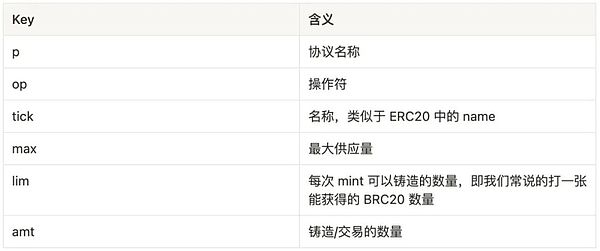
Similarly, if you explain it here, the same as the Ordinals protocol is equivalent to you initiating a WeChat transfer, but the content of the remarks is different.
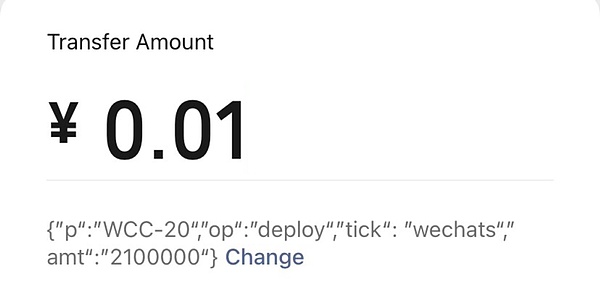
extend
Although the method of the BRC-20 protocol, although this method of the Bitcoin chain can be freely issued by the Bitcoin chain, because Bitcoin has no account model and the content of the BRC-20 is placed in the Taproot script of Segwit, so that we cannot directly on the chain on the chainCalculate the BRC-20 of each account.Therefore, the current method is to build an index server under the chain to achieve the token information acquisition, balance calculation, transaction transfer, etc. of the BRC-20, but this method will have a centralized risk.
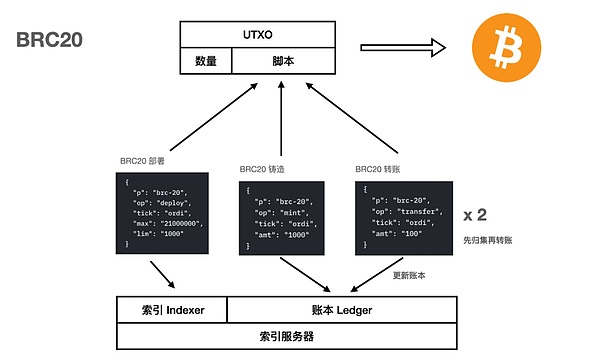
Souce: https://twitter.com/blockpunk2077/status/1725513817982136617
First of all, you can understand the three parts of the first layer of the BTC: the agreement specifies the rules of writing data on Bitcoin, the index provides the ability to query and analyze these data, and the ledger records the tokens balance, handled the transfer of transfers, and handled the transfer of transfer.Essence
For the BRC-20, the index server first needs to identify each BRC-20 deployment to read the replacement currency information. This part is called “index”.
At the same time, because the balance of the BRC-20 is engraved in the script, the BTC network itself cannot be recognized, the index server of the BRC-20BRC-20 must build a ledger with a record BRC-20 locally.Whether the transaction can do (enough currency) every time the transfers occur, the local ledger needs to be checked and updated.

So BRC-20 needs to send two transactions during transactions:
-
The first transaction reads the latest ledger data in the local ledger and calculates the balance
-
The second transaction is re -transfer.
-
Ordfi protocol with unique token standards
-
Compatible with the BRC-20s to facilitate market integration, and breaks the name length limit of the BRC-20 name. The length of the BRC-20s token is fixed to 4 bits, and the length of the TAP tokens is 3 or 5-32 (4 cannot be 4Bit)
-
Support batch transfer, pledged assets, tokens SWAP and other functions.Improve transaction efficiency without relying on L2 chain
-
The first agreement to support the curse inscription
-
Use the $ trac deployed earlier as the governance token of its agreement(Not very characteristic, but put it here to explain)
-
Various problems caused by proprietary API:
Service locking, high interaction costs, and the same chain data will have different expression forms, competition between developers
-
Unreliable indexes:
Asset security issues, frequent changes, positive and negative numbers of order
-
Lack of top -level design:
It is difficult to combine agreements and develop proprietary facilities
-
Limitation of metadata on the chain:
-
Example: The collection must be manually uploaded to the github warehouse, and they must be updated manually in dozens of markets, and no consensus on the chain response
-
Error cannot be repaired or repaired high cost
-
The data structure of the Ordinals protocol depends on the use of a single file, which means that there are out -of -chain agents and proper indexes in different markets
-
Lack of control:
If you cannot access strong high -performance decentralization indexes and more service/index locks, then data portability will become a problem
-
Lack of benefits:
Relying on these specific services and markets, their indexes, API and other proprietary services will lead to a reduction in profit
-
In this way, we can rank content based on energy consumption
-
When you have a very cool reference or prefix, you can organize a related community through consensus
-
Add random luck component during the casting process
-
Organize communities around the vanity TXIDS and Refs
-
Ranking based on expensive signal theory
-
Casting and restrictions of Token — spam filter
-
The container name starts with the theme label # symbol, and each name is unique and unique. When casting, take the first way to get
-
The length of the name is between the range of 3-64 characters and using bitwork to slow down the registration speed of the container name
-
Container Name Example:#Bitcoin-Funks,#Gemini-Jarriors, …
-
When deploying ARC20, token names, total amount, quantity limit, difficulty setting, start block, image and other information.
-
When the user casts ARC20, the name of the token is written into the script of UTXO. The number is directly determined by the number of SATS in UTXO.
-
To transfer the ARC20, the user does not need to deposit any data to the BTC. It only needs to continue to hold the token Uxto as a transaction input and output it to other addresses.
-
It greatly reduces the cost of the index server. Almost anyone can make the index server by themselves. The degree of decentralization of the system is very high.
-
The transfer depends entirely on the BTC network and will not repeat the creation of junk transactions. The security of the ARC20 transfer itself is guaranteed by the BTC
-
ARC20 atomicity is consistent with the atomicity of BTC, suitable for achieving many native applications
-
When deploying ARC20, token names, total amount, quantity limit, difficulty setting, start block, image and other information.
-
When the user casts ARC20, the name of the token is written into the script of UTXO. The number is directly determined by the number of SATS in UTXO.
-
To transfer the ARC20, the user does not need to deposit any data to the BTC. It only needs to continue to hold the token Uxto as a transaction input and output it to other addresses.
-
First of all, we registered a field +atom
-
When we want to set up a community about Punk NFT under this field, we can create a sub -field based on the +atom field +atom.punk
-
After that, we want to set up a DAO in the PUNK community, then we can create a sub -domain +atom.punk.dao
-
Everyone in DAO allocates a DID, you can create a sub -domain name +atom.punk.Dao.jingle
-
Any field or subordinates can be released
-
All subordinates can inherit the same characteristics and publish their subordinates based on the sub -field
-
Everyone is the registrar in the field they own, and there is no centralized agency
-
Use Cong as a basic unit representative tokens
-
Allows creation, transmission, and updating digital objects on Bitcoin
-
Provide tokenization methods to decentralize and meet Bitcoin culture
-
Use the workload certificate (POW) to increase the fairness and decentralization of the casting process
-
The purpose aims to expand the function of Bitcoin and supports a wider range of applications
-
Protocol inheritance
The BRC-100 protocol introduces the concept of inheritance.The agreement directly or indirectly from the BRC-100 is called the BRC-100 extension protocol.The BRC-100 expansion protocol must inherit only from one protocol.The extension protocol will inherit the attributes, operations and computing operations of the parent protocol, and can only expand attributes and calculate operations.
This is similar to that when we are making ceramics, it is just a mud embryo at the beginning. Slowly, we gradually have more expansion functions such as decoration and placing things through polishing and shapes.
-
BRC-100 protocol stack
The BRC-100 protocol and all its extensions and improvement protocols are collectively referred to as the BRC-100 protocol stack. Based on the protocol stack, all token/applications can be compatible with each other, which means that a token/application can use other places to use other places other places.app.
-
Agreement and application
In the BRC-100 protocol stack, the protocol is the standard for describing the attributes, operations and computing operations of the application.Application is an instance created by the protocol through the inscription deployment to the Bitcoin network.
Application is essentially a token with computing power and state.The agreement describes the computing power of the application in detail.If you do not add a sub -application, the application cannot have the computing power that is not described in the agreement.The added sub -application can only have protocol computing power, otherwise the public index can not verify the state of the application, resulting in inconsistent status of users and applications.
-
Applied nested
Applications based on the BRC-100 and its extension protocols can be nested, that is, one application can be created under one application, which is called sub-application.
Ticker’s Ticker starts with “Parent Application Ticker:”. Under one application, you can create multiple applications to complete multiple independent computing logic.For example, in the classic AMM DEX scenario, you need to create multiple LP sub -applications/tokens in one DEX application, such as “AMM_DEX: LP_BRC100_BTC”.
-
Application status and address
In addition to the UTXO model, the BRC-100 protocol also introduces the status machine model to expand the computing power of the protocol.
Applications, sub -applications, and addresses can be in the state.For example, applications can hold tokens, and the address can have a balance in the application.The conversion of UTXO and status is completed by BURN2/BURN3 and Mint2/Mint3 instructions.
The calculation operation (COP) is used to represent the specific calculation logic, that is, the conversion logic of the application and address state.
For example, the address A destroys 10 token1 to the application through the BURN3 inscription.At this time, the application has this UTXO and 10 token1.Applications can allocate these 10 token1s by changing any address or internal state of the application through its computing logic.Then the application has a token or application in the application to cast it through the Mint3 instruction.
-
Authority
The BRC-100 protocol introduces two roles: owner and administrator.
The address with an application deployment inscription is called the owner.The owner can track UTXO transfer deployed inscriptions.The owner of all sub -applications is the owner of the parent application.
The administrator is managed by the owner, and the administrator cannot manage other administrators.The authority of the owner and the administrator is strictly limited.They are unable to review the user and can only do: the application that has not started DAO, and complete the calculation operation of Mint2/BURN2.
Administrators can be addresses, applications, or sub -applications.Applications and sub -applications are default to be the administrative administrator without additional settings, but the sub -applications do not be mutual administrators.
The inscriptions of BURN2/BURN3 need to be sent to the applicants of the application to handle it correctly.The “Mint2” instructions that need to be cast can only be allocated by the logic of the application/sub -application, and the application/sub -application needs to be the administrator of the tokens. The “BURN2” instruction also has similar logic.The inscriptions of BURN2/BURN3 need to be sent to the applicants of the application in order to properly handle the logic of the calculation operation.
-
Decentralization of applications
The BRC-100 protocol stack introduces governance protocol: BRC-101, which can control applications that implement BRC-100 or its expansion protocol standards.After applying DAO, you need to complete the governance by decentralized voting.
The governance of the application includes: update the attributes of applications and submissions, deployment subcutors, and stop applications.Application governance is chain governance.After voting on the chain, the calculation operation should be used: EGOV notify the application, and then the application will automatically perform the governance after the time is locked.
-
Deploy applications/token
In the BRC-100 protocol, there are two ways to deploy applications: one is to use the deployment instructions to deploy directly, and the other is to deploy through the governance protocol: BRC-101.
The first parent application and sub -application for deployment configuration does not require governance, and the other is a sub -application that needs to be deployed.
-
Casting token
The BRC-100 protocol provides three cast instructions: Mint, Mint2, Mint3 for casting tokens in different scenarios.
When deploying applications, the number of tokens that users can cast (using the “MINT” instruction) need to be set.The remaining tokens will also use the “MINT” instruction to cast.
“Mint”: user casting, fair casting, anyone can cast tokens for users, but the total number of “Mint” operators cannot exceed the settings of the “MAX” and “MMA” properties of the application.After the coin, the circulation supply of tokens will increase.
“Mint2”: The number of users or applications that can be cast by the whitening list is cast, and anyone can be the user or application Mint2 token under the application rules.After Mint2, the circulation supply of tokens will also increase.
“Mint3”: The state treasury casting, Mint3 is the balance of users or applications in other applications. Anyone can use Mint3 tokens under the application rules.After Mint3, the supply of tokens will not increase.
-
Destruction tokens
Destruction is the new operation of the BRC-100 protocol.Users can conduct inscriptions on the destruction operation, and then transmit inscriptions to the applicants of the application, which is similar to the semantics of the transmission operation.The burn tokens are then destroyed or transferred to the balance of the application.
Similar to the definition of mint operations, there are also 3 bung operators: BURN, BURN2, BURN3, and logically correspond to MINT, Mint2, Mint3, respectively.No additional configuration, all applications/tokens support these three destruction instructions.
“BURN”: Public destruction, everyone can use instructions to destroy the token.After the tokens are successful, the amount of circulation will be reduced, and the destroyed tokens cannot be cast again.
“BURN2”: The whitelist is destroyed. According to the preset rules of the application, after the BURN2 to the application, the balance of the user will be reduced, the state of the application will be updated accordingly, and the circulation will be reduced.In actual, logic such as removal of liquidity in AMM DEX can be achieved through BURN2.
“BURN3”: The state treasury is destroyed, BURN3 will reduce the balance of the user’s tokens and increase the balance of the “To” application.In practical applications, you can cooperate with Mint3 to complete the logic of exchange tokens in AMM DEX and increase liquidity.
-
Trading tax and currency tightening
The BRC-100 protocol introduces a new token transaction mechanism: transaction tax and currency tightening.Applications can set transaction tax percentage, tax receiving, and transaction black hole percentage.These settings take effect only on transactions based on AMM -based decentralized exchanges.Normal transfers, coins and destruction operations will not cause trading tax and deflation.
-
Calculation operation
The calculation operation is an extension of the BRC-100 protocol.It is represented by the COP attributes to be the smallest unit of protocol computing power.When using it with OP operating symbols: BURN2/BURN3/Mint2/Mint3, it can be understood as a state conversion function. It defines how the application and user status is updated under the corresponding OP operator.
-
Oracle prophecy machine
Oracle is a common need for interaction between the blockchain and the parties under the chain, and has achieved well implementation and application on blockchain and other blockchains.If there is no prediction machine, the smart contract on the blockchain will be completely limited to the data on the chain.But compared with the blockchain, the BRC-100 protocol has very special features.
It not only has the computing power of the blockchain, but also relies on the indexer under the chain to complete the calculation.At the same time, the index under the chain can communicate directly with other blockchain or meta -protocols, but the blockchain cannot do this, which means that the index can be verified by sufficient proof data to verify any data under the chain or any data on the chainMeet the requirements of the Oracle BRC-100 protocol.
For example: verify the transfer of BTC or BRC-20 assets, verify the price of ETH on a block of Ethereum, etc.
In other words, in the BRC-100 protocol, the prophecy machine has a new paradigm: proof and verification, where the user submits proof data, and the indexer as an Oracle Verifier to verify the proof data submitted by the user.Essence
In the BRC-100 protocol, Burn2/BURN3/Mint2/Mint3 instruction native support Proof attribute is used to submit the proof data outside the agreement.The indexer can verify the proof data, ensure the consistency and correctness of the state, and the proof can be a transfer certificate, the Merkel tree certificate, the zero knowledge certificate, the price certificate, etc., can be used for bridge assets, airdrops and other scenarios, Bitcoin 2nd floor layer 2 layer., Loan liquidation, etc.
-
Relay protocol
The meta protocol on the Bitcoin is heterogeneous and cannot communicate with each other.Different protocols are similar to different blockchains. They share the security of Bitcoin blockchain and have different computing capabilities.In addition, the meta protocol cannot communicate directly with other blockchain: For example, Ethereum, and assets on other blockchain cannot be used.
Therefore, the BRC-100 protocol stack requires a relay protocol to complete the communication between Bitcoin, meta protocol, blockchain and BRC-100 protocol, and receive other protocols or asset bridges on the blockchain to the BRC-100 to participate in participation and participate in the participation.DEFI and other decentralized applications.At the same time, due to the diversity of agreements and blockchain, the BRC-100 will have a variety of relay protocols.
First of all, we will release: BRC-103, responsible for the assets between Bitcoin, BRC-20 and BRC-100.When the assets from the meta-agreement or blockchain (source) bridge receive the BRC-100 protocol (target), in order to verify the correctness of the transmission, the “Mint2” instruction is required to submit the certification data. This is called the transmission certificate.The transfer certificate refers to when cast anchor assets on the target protocol (BRC-100), the transfer data on the source end (such as Bitcoin, BRC-20 or other blockchain) needs to be submitted at the same time as a proof.Or inscription ID.So that all BRC-100 indexes can verify the correctness of the asset coin in the anchored asset.
Transfer Proof is a very important application of the Oracle BRC-100 protocol.
-
BRC-101 (released)
The decentralized chain of the BRC-100 protocol stack defines the attributes of how to update the attributes of the parent/sub-application/tokens, stop applications and add submissions.In addition, the BRC-101 can also pass the decentralized vote to complete the under-chain governance.
-
BRC-102 (under development)
Automated liquidity protocol defines to tokens to exchange the BRC-100 protocol stack by automatic as a city merchant (AMM) algorithm.Calculation logic will be similar to UNISWAP on Ethereum.
-
BRC-103 (under development.
The relay protocol between BTC, BRC-20 and BRC-100.The meta protocol on the Bitcoin is heterogeneous and cannot communicate with each other.Different protocols are similar to different chains.They share the security of Bitcoin blockchain and have different computing power.
Therefore, the BRC-100 protocol stack will release multiple relay protocols to complete the communication between the meta protocol, different chains and BRC-100, and receive other protocols and the asset bridge on the chain to the BRC-100 to participate in DAPP such as DEFI.
-
BRC-104
The liquidity mining agreement defines how to get token rewards after the pledged token.
The pledged token may be any BRC-100s-based tokens, such as the liquidity pool token of the BRC-103 protocol, or the tokens of the same currency as the award.In addition, the BRC-104 will support the lock-up period to lock the pledged tokens.
-
BRC-105
The airdrop agreement defines how to efficiently put the tokens into multiple addresses.
The protocol will use Merkle Tree to complete the airdrop to save transaction costs because all original airdrop data do not need to be disclosed on Bitcoin.When users only need to submit Merkle Proof to prove that they have airdrops, then all indexes can verify the correctness to complete the airdrop.
-
BRC-106
The decentralized stable currency pool protocol defines how to generate stable coins through mortgage.
The calculation logic will be similar to the DAI of MakerDao3 on Ethereum.
-
BRC-107
The borrowing pool agreement defines how to borrow assets through mortgages.
Calculation logic will be similar to AAVE on Ethereum.
-
BRC-108
The automation liquidity protocol of stablecoin.
-
BRC-109
Decentralization trading agreement for sustainable futures.
-
BRC-1110
EVM compatible with the relay protocol between the blockchain and the BRC-100, which defines how to connect the asset bridge compatible with the EVM compatible blockchain to the BRC-100.
-
BRC-11
The second floor verification agreement of Bitcoin defines how to verify the proof data of Bitcoin on the second layer of Bitcoin like the second -level smart contract on Ethereum.
The Ordinals protocol is essentially designed for NFT. Based on its improved BRC-20, the complexity of the transfer is recursively growing.The BRC-20 index also undertakes the work of the ledger. This ledger is completely separated from Bitcoin and exists under the chain.The indexor must accurately record the change of each balance in order to ensure the integrity of the ledger.
Therefore, with the accumulation of time, the index ledger will accumulate, and the pressure of the node will be greater.If the index is not continuously motivated, it will be difficult to continue.If the index ledger is no longer provided, the BRC-20 will be completely unavailable.
“2” trac systems
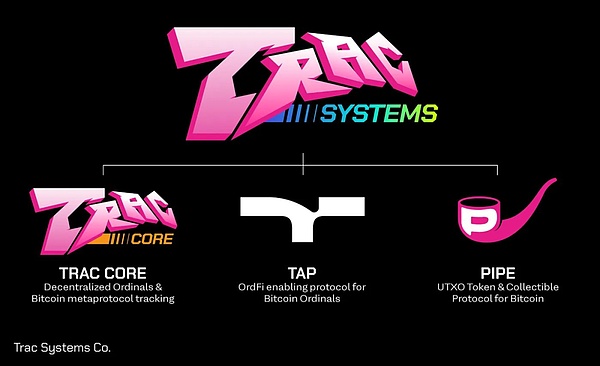
Source: https://twitter.com/trac_btc/status/17226481222269012428
$ TRAC
$ Trac is a BRC-20 Token launched by Benny at 2023.5.3 and officially deployed at 2023.5.22.
Trac core
Trac Core is a prophet and decentralized indexer for Bitcoin inscriptions to solve the problems of inscription ecological data indexes, retrieval, and price feeding.
For example, in terms of indexes, although the inscription data is stored on the Bitcoin chain, this is only the information of the relevant inscriptions, and the data update and account check links need to rely on third -party centralized indexes, and security will always be criticized (for example, at the end of November (for example, at the end of NovemberThe market has an error in Binance’s Ordi indexes), so TRAC can make the inscription ecosystem inherit the security of Bitcoin, collect, organize and sort all data on Bitcoin, and plan to introduce hundreds of index nodes in the future.
At the same time, with the increase of nodes, TRAC Core also integrates the role of prophecy machines. From the external source to obtain the necessary reliable data to enter the blockchain, it is the basis for subsequent establishment of an inscription native DEFI and other upper layers.You can call free.
Therefore, TRAC CORE has both the ecological card of decentralized indexes and Bitcoin prophecy machines.
TAP Protocol
TAP Protocol was based on a Ordinals -based improvement protocol released by the $ Trac team in 2023.8.7.We can think of it as an upgraded version of the mirror BRC-20 protocol. It is a protocol that compatible and upgraded the BRC-20. It has the following 4 points:
At present, TAP Protocol is officially issued two tokens, $ TAP and $ -TAP, of which $ TAP was cast by BennytheDev at 2023.8.6 but not circulated;That is, 21,000), according to SHEP’s research, $-TAP deployed 30 minutes earlier than $ TAP, which is the real first native currency in the agreement.
Pipe
The PIPE protocol was proposed by the author Benny, the author of $ Trac, that the protocol was improved by Benny’s Runes protocol.The PIPE protocol can be said to be a Runes protocol, because the Runes protocol is proposed by Casey, the founder of the Ordinals protocol, but its main energy is on the Ordinals protocol, so the development of the Runes protocol has been relatively slow, and Benny finishes the Runes protocol after studying the Runes protocol.After the thought, the PIPE protocol was launched in just one month
The connection between the three
In this way, we can see that Benny has launched three projects in less than half a year, and these three projects are also intertwined, the ultimate dolls, let’s use the picture belowThe relationship between.
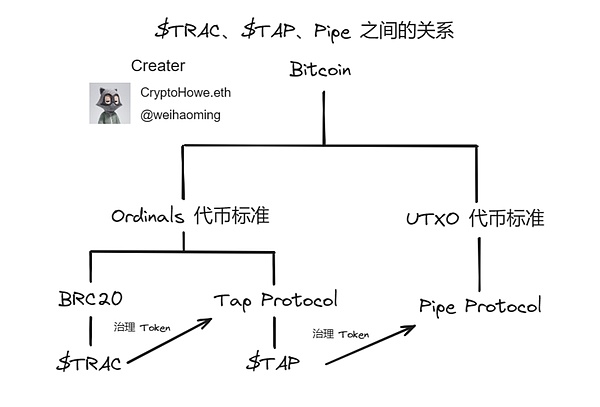
Generally speaking, the project’s governance tokens are used to choose the native token of its agreement, and Benny can achieve each other through this method of governing the tokens to promote and restrict each other, which is extremely rare.At present, the specific functions of these governance tokens have not been announced, so in the next development, we can see if this will have some different wonderful collisions.
“3” Atomicals protocol
Protocol proposal
The founder of the Atomicals protocol tried to develop a DID project on the Ordinals protocol in February, but during the development process, he found that the limitations of the Ordinals protocol caused some of the functions he wanted to achieve or a little awkward, which was convenient for 2023.5.29 issued the first idea about the Atomicals agreement on Twitter. After several months of development, the agreement was launched at 2023.9.17.
https://twitter.com/atomicalsxyz/status/1663169464802725889
At first the launch of the Atomicals protocol did not stimulate too much water in the Bitcoin ecosystem, because at that time, due to the introduction of the Ordinals protocol and the BRC-20 protocol, a large number of improvement protocols appeared on different chains, but when we checked by viewingWhen the Atomicals protocol, we will find that it is another completely different protocol.
Theoretical foundation -digital material theory (DMT)
DMT theory (Digital Matter theory) refers to digital material theory. Index information is not only random number and letters, but it can actually be regarded as its own “material”, such as wood or metal.DMT can be a blockchain data of transactions, bytes or any other model in blockchain data, and these models can become valuable digital items or assets.
Here are also quoting Dr. Jing’s content, so that everyone can better understand:
Some physicists claim that information is a new material form, and ultimately it may defeat everything on the earth to become the master (also controversial).According to the current growth trend, in about 350 years, the number of digital information used on the earth may be more than material atoms, which also highlights the index level growth and importance of digital information.
The idea of physicists encouraged many people to transform him into executable protocols, and analyzed valuable information from the Bitcoin blockchain to create “non -free Tymond currency”.Using digital material theory may completely change the creation of digital value, making it more unintentional and meaningful.By using data in the context of digital material theory, new mechanisms can be created to identify and export new value sequences in data, thereby opening up the possibility for new tokens.
For example, some people even use Bitcoin as a application of DMT. Bitcoin is also a non -free Tymond currency. It has its own specifications such as 21 million pieces, a block of 10 minutes, and so on.Through digital information exchange on the Bitcoin network, value can be transferred and stored.Although Bitcoin exists in the digital world, its value and influence can have a significant impact in the real world, just like traditional physical currencies.
However, DMT is not without controversy.Some critics believe that digital information cannot be compared with basic physical entities such as material and energy, because digital information itself cannot directly change the real world.However, the advocate of DMT believes that although digital information cannot directly change the real world.However, through human actions and decisions, digital information can indirectly change the world, such as the application of cryptocurrencies.
The problems faced by the existing Bitcoin builders
The first three points are for developers ‘problems, and the latter three points are for creators’ problems
Atomic theory
The Atomicals protocol is a simple and flexible protocol that is used to cast, transfer and update digital objects (traditionally NFT) such as Bitcoin and other unprepared transaction output (UTXO) blockchain.
1. 1.Digital objects- “Atom” NFTS
Atomical (or “atom”) is a new type of NFT that can be cast, transfer and update on Bitcoin.The main difference is that there is no need to use a central service or trusted third -party indexer.It does not require Bitcoin to make any changes to run, nor does it require side chain or any L2.It’s time to retract the control of our digital life forever.
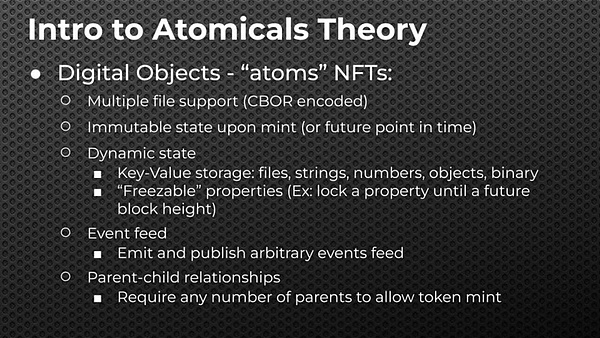
Source: https://twitter.com/atomicalsxyz/status/1702867266008719582
2.Bitwork -Micro -Working Proof POW
The most interesting improvement of the Atomicals protocol is that the CPU computing session is added to the token casting process. This link is called bitwork.The castor must puzzle the hash values that match the specific preliminary character before casting.
POW can make token casting relatively fair, with both energy and time injection, and random luck components.
Different from the traditional POW algorithm calculation difficulty, Bitwork can adjust the difficulty of mining by changing the prefix matching method. It can add numbers between 1 to 15 in the prefix, such as: “7777.1” or “7777.15”.Or any number between the two, the number represents the range of changes allowed by the character.
Its working principle is “.” The number behind is called a semi -passing character, which is used to match any fifth character starting from the number.Taking “7777.10” as an example: The first 4 TXID characters (hexadecimal) must be “7777”, and the fifth character can be a number 10 (hexadent) and above.
So 5 digits can be A, B, C, D, E or F.This makes the entire system not only 16 times when the difficulty increases each time, but can choose the range between 2 and 16 times.
At the same time, Bitwork also brings some novel use cases:
3.Container NFTS -NFT standard
Container is a collection standard for representing NFT and metadata.It can be used for the increase/modification/deletion of any protocols such as Atomicals, Ordinals, Bitmaps, etc., and you can also choose ** Permanent “seal” ** to lock the content into a container and then give the “key” that can open the container.Destruction, so as to achieve the purpose of maintaining the state and unable to modify.
Container name service:
4.ARC20 -dyeing coin
The Atomicals protocol uses the smallest unit SAT of Bitcoin as the basic “atom”. The UTXO of each SAT is used to represent the amount of the token itself, the ARC20 balance, the number of SAT, 1 token = 1 SAT.
ARC20 is a dye coin model, and the registration information is recorded in the transaction script.By binding information with UTXO, it can improve the programmatic and decentralization of the token. At the same time, the security of the transaction is guaranteed by the BTC main network.Calculate the balance of ARC20 tokens, because the balance of the tokens is consistent with the number of SAT in UTXO.This is the biggest difference with the BRC-20 protocol.
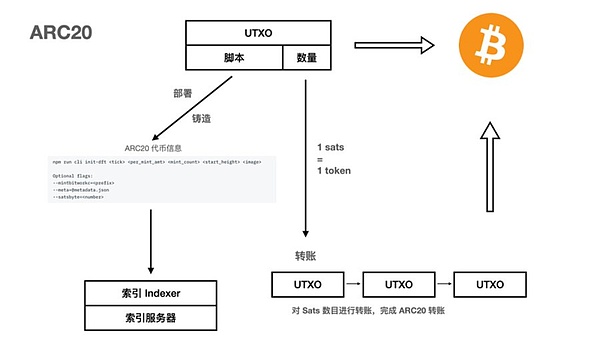
Source: https://twitter.com/blockpunk2077/status/1725513817982136617
For ARC20, we only need an index to help us read the replacement of currency registration information, and at the same time recognize the MINT transaction to confirm which UTXO is ARC20.
The benefit of this is:
Of course, the design of the dyed coin also brings some disadvantages, because it does not write the balance in the data, but is bound to the SAT, soThe minimum split accuracy of ARC20 is 1Essence
This also makes it set on the BTC main network itself to prevent dust attacks.At least 546 SAT transaction restrictionsBelow, users cannot currently conduct fine -grained transactions.However, the Atomicals protocol has now given a specific split plan and is actively developing.
Here is the most essential difference between BRC-20 and ARC20 with a picture:
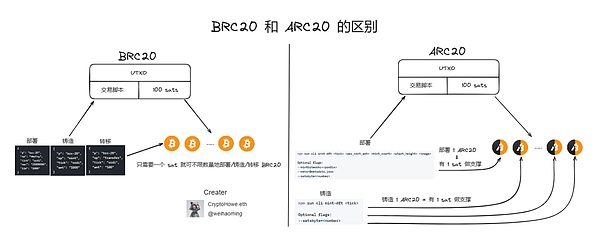
>5.Realm name system (RNS) -D field domain name system
RNS claims to be the real opponent of the DNS domain name system and aims to become a global alternative to DNS and other blockchain domain name systems.
Realm Name is a readable logo that can be used for related network addresses and resource information.The domain name starts with the number +, and at least one letter character, such as +alice and +agent007, are all valid names (top -domain -domain system (RNS) fields or TLR).
The domain name is to use the atomic digital object format directly on the Bitcoin blockchain by itself and manages itself, which basically means that there is no middleman or centralized registrar.
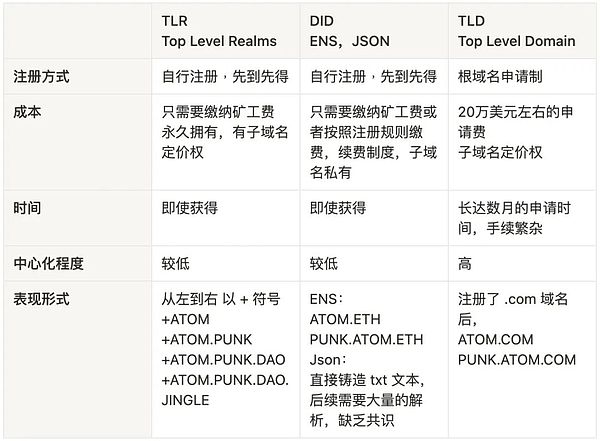
6.Subrealm Minting -casting in the sub -field
By managing and tokenized communities by managing a sub -domain (Subrealm) under any field, the specific rules are as follows:
Take a popular example:
In addition, Subrealm can also be used for social media organizations, authentication, loyalty rewards, and so on.
Characteristics
Through the atomic theory above, we can know that the main characteristics of the Atomicals protocol include:
The main difference from other protocols
The best way to understand the difference between the Atomicals protocol is to compare it with other popular NFT protocols:
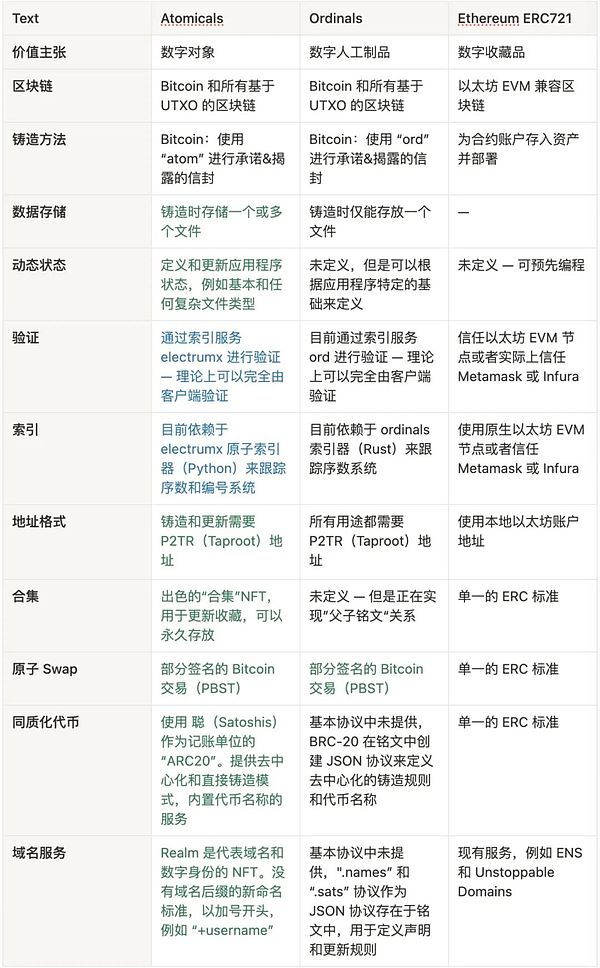
“4” bitmap protocol
Protocol proposal
Bitmap.land is the first meta -universe project in the Bitcoin ecosystem. It is based on order -based theory and bitmap theory.
Bitmap theory was proposed by Twitter users @Blockamoto on 2023.6.5.
This theory is enabled to map each transaction in the Bitcoin block into a parcel to form a district or area (district).Different transactions input differences lead to different size of the maps.
https://twitter.com/blockamoto/status/1665704582863810560
Protocol concept
Bitmap.land buyers are influenced by Decentraland and The Sandbox, and use the method of dividing land and drawing patterns on the map, similar to the logic of buying land on these two platforms.The user writes the data into Satoshi through the inscription, and obtains the ownership of a specific Bitcoin block, similar to a free coin.
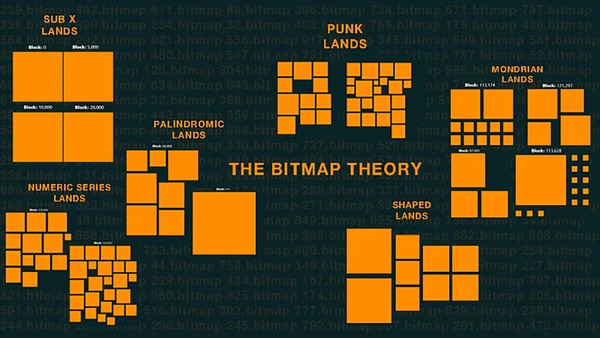
Source: https://share.ForeSight-News.com/article/detail/48677
On the Bitcoin blockchain, each block is divided into four parts to represent different half -cycles.Users can check the numbers and colors of each block on the BitMap.land website. Different colors represent different sales status.
The release of Bitmap.land is closely related to order theory, similar to the Virtual land on Decentraland and The Sandbox depends on the ERC-721 standard.The preface theory is similar to the principle of early chromosome coins, but in the context of Bitcoin’s current narrative, consensus, ecology, and infrastructure, the two are different.Although the theory of order number is not as innovative as ERC-721, the BRC-20 method is more primitive.
The bitmap theory adds a new explanation to the Bitcoin block and provides a topic, although it lacks practicality.It changed the connection between Bitcoin and the Yuan universe. By allowing users to own and record a single block, it provides a new dimension for each block of the Bitcoin blockchain and makes it part of the Yuan universe.
The bitmap theory has attracted the attention of the Ordinals community and inspiring the inscription.Any block on the Bitcoin blockchain can become part of the Yuan universe through Bitmap, bringing new creation and ownership opportunities to the community.
Bitmap.land blurred the boundaries between Bitcoin and the Yuan universe through the theory of bitmap, and paved the way for ownership, creativity and community development.With the continuation of the inscription boom, this means huge potential for those who seek to occupy a place in the digital field.
Interested students can also go to the official browser to view various bitmap: https://bitmap.game/
“5” BRC-100 protocol
Protocol proposal
As we all know, the ORDINALS protocol, BRC-20 and other Bitcoin-based protocols have brought a lot of imagination to the development of the Bitcoin ecosystem through the “chain statement, linked analysis” mechanism.And a large number of Bitcoin NFT and tokens have been issued, but the development of decentralized applications such as DEFI is still lagging.Therefore, Mikael.BTC released an agreement that supports decentralized calculation at 2023.9.2: BRC-100.
https://twitter.com/mikaelbtc/status/1697930653036895
Protocol introduction
BRC-100 is a expansion protocol based on the Ordinals theory, designed for various decentralized applications on Bitcoin Layer 1.This agreement not only undertakes the basic functions of BRC-20 on Bitcoin, such as creating, casting and transactions, but also introduced the concept of decentralized calculation.
This means that based on the BRC-100 protocol stack, you can develop various decentralized applications such as DEFI, SocialFi, and Gamefi to bring real decentralization, no trust, resistance, and no license to Bitcoin’s first floor.Application scenario.
A major feature of the BRC-100 protocol is its interoperability. It not only allows all protocols and applications in its protocol stack to be compatible, but also supports BTC, BRC-20 or other first-layer chains such as Ethereum andStacks interacts.In addition, the agreement also introduces the UTXO model and status machine model, which enhances its security and computing power.
Characteristics
Because the BRC-100 protocol is the expansion of the Ordinals theory, the BRC-100 itself has all the characteristics of the BRC-20, and it also introduces some innovation characteristics:
Provincial flow: It is based on the BRC-100 protocol, such as airdrop protocols, governance protocols, relay agreements, etc. We can understand that Mikael wants to introduce various DEFI games into BTC.
Use case
Because the BRC-100 is expanded from the BRC-20, it has all the application scenarios of the BRC-20 in essence, but the application scenario of the BRC-100 is far more than that.We can still expand on the BRC-100 protocol. The following are some of the extended agreements listed on the official. Some agreements have been developed:
“6” BRC-420 protocol
Protocol proposal
After the BRC-20 protocol was proposed, another new experimental agreement BRC-420 appeared in 2023.9.19, also known as the Yuan universe agreement.
https://twitter.com/rcsvio/status/170411888845013117
Protocol concept
The BRC-420 is an interesting experiment. It is the first meta-universe protocol in the Ordinals protocol, a asset agreement based on the Bitmap protocol.
By combining multiple inscriptions into a complex asset, such as game items, animations and effects, or the game module in the Yuan universe.Create all kinds of assets from small characters, pets to complete game scripts and virtual machines.
Due to the open source characteristics of these assets, any client can run or check, fully reflect the spirit of “Client Agnostic” of the full -chain game.
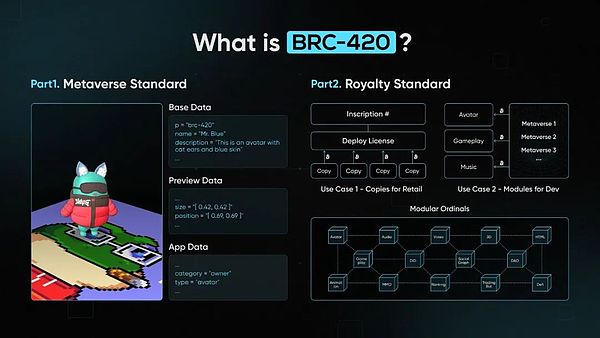
Source: https://twitter.com/rcsvio/status/170411888845013117
The BRC-420 protocol contains two parts, one is Metaverse Standard, and the second is the Royalty Standard (tax standard).Agreement on the chain.
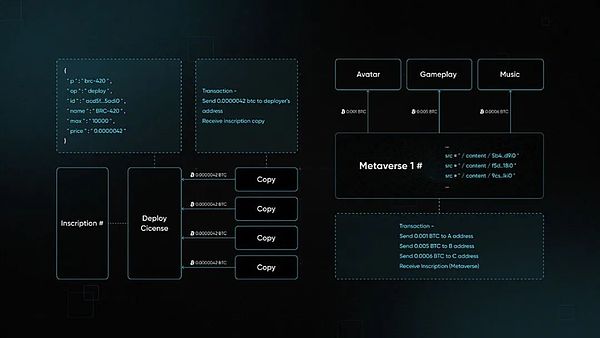
Source: https://l1f.discourse.group/t/brc-nTroduction-TO-BRC-420/88
The BRC-420 has opened up the possibility for the chain game and modular blockchain of Ordinals.Different creators can contribute different modules, and new creators can innovate on the basis of innovation of their predecessors.This has led to the surge in various innovations in the Ordinals ecosystem and benefit all participants.
Protocol development
At present, the BRC-420 has released the BRC-420 DLC in 2023.11.3, which can integrate thousands of yuan of inscriptions into 1 DLC.After deployment, users can get thousands of dollars assets in a casting.

Source: https://twitter.com/rcsvio/status/1720444100124831867
“7” runes protocol
Protocol proposal
After the BRC-20 protocol came out, Casey felt that it was not a good idea for creating homogeneous tokens on Bitcoin. 99% of homogeneous tokens were scams and would not disappear in the short term.Creating a good homogeneous currency agreement for Bitcoin may bring considerable transaction income, developers’ attention and users to Bitcoin.
So Casey is convenient for 2023.9.26 to propose a Runes protocol based on UTXO technology.
https://twitter.com/rodarmor/status/170643824860604382
The design of the Runes protocol may also be affected by the ARC20. Choose to write token data directly in the script of UTXO, which contains the ID, output and quantity of the token.
Obviously, the implementation of Runes is very similar to the ARC20, and the token transfer is directly handed over to the BTC main network for processing.The difference is that Runes writes the number of token in the script data, which makes him have higher accuracy than ARC20.
But at the same time, the complexity has become higher, and it is difficult to directly use the combination of BTC UTXO like ARC20.
Protocol development
After the Runes protocol was launched, because Casey’s development energy is mainly on the Ordinals protocol, the development of the Runes protocol has been relatively slow. This is why the Benny quickly developed the PIPE protocol after the Runes protocol was released.
During the Taiwan Blockchain Week in December, Casey also announced the time of the Runes protocol to launch the main network at the event of Taipei. At the time of the block height of 840,000, the next time the BTC was halved, it was about the end of April 2024 at the end of April 2024.Essence
Summarize
After investigating the BTC asset issuance plan, I also fully felt their charm, so I also said that some of their own subjective views:
1. BTC’s assets have ignited the explosive development of the BTC ecosystem this year, although everyone has mixed views on them.But we abstracted the development of the BTC ecology, in fact, it is inseparable from an important thing- “narrative”.
As I mentioned in my previous thinking, the product needs have a good narrative to support it, otherwise it is easy to face only the product and the embarrassing situation of the user.The major asset issuance plans also prove this, such as First Is IS First, the various imagination of the agreement, the official endorsement of the ecology, the official endorsement, etc. This is the specific performance of the narrative.
2. Similarly, we must not deny the contribution of this wave of assets to the BTC ecology.Although most of the asset issuance schemes may not have any substantial breakthroughs in Bitcoin’s limitations, they not only provide a rare pressure test for major public chains, but also bring some possible future development of Bitcoin.
Through these waves of inscriptions this year, the long tail effect brought by the inscription has gradually expanded from the initial Bitcoin to the inscriptions on other public chains.Under the popularity of the national inscription, we also felt some of the current Bitcoin’s main network, such as GAS fees, slow transaction speed, etc., which also shows the necessity of the BTC capacity expansion scheme.
3. Even though the capacity expansion plan has begun to lay out a long time ago, it has been tepid. Now more and more users are paying attention to the BTC ecosystem under the inscription.The development of the plan.
At present, the existing expansion scheme is mainly divided into three categories: side chain/lightning network/native L2, but there is no direction to determine its leading advantage, and it is still in the stage of competition.There will be a shocking direction, we can look forward to it, and at the same time, this is the direction that can be focused on.
4. In the survey of the asset issuance plan, there is a very obvious trend exist. From the beginning of the Ordinals protocol, the subsequent BRC-20-based improved agreement, then to the BRC-100 decentralized calculation protocol (To continuously expand this way of introducing the DEFI ecosystem into Bitcoin), the BRC-420 yuan universe agreement (the possibility of introducing games and music into Bitcoin), ARC-20 (new and parallel to the BRC-20 parallel new onesAsset issuance plan) and so on.
The asset issuance plan has been improved from some basic improvements from the original asset issuance agreement to the needs of the BTC ecosystem (such as prophecy machines, DEFI, games, etc.) on the basis of a certain asset issuance agreement to make some large -level ecological layouts.Even a new type of asset issuance agreement is issued to formulate rules.
5. The ecological development of BTC is still very early. Whether in Web2 or web3, there is a phenomenon of users who can have the user as long as who has the right to formulate the rules first.Therefore, there are still many opportunities for wealth. We must comprehensively look at the development of the BTC ecology. After all, the inscription boom will be cooled.Accelerate the development of the entire BTC ecology in other aspects.
Of course, there are some different opinions on this aspect, such as Teacher NINGNING’s view of BTC L2 https://twitter.com/0xning0x/status/1737010523374563744, rational discussion.
6. Although it is still a stage of rushing first and then studying, the big guys also have the butt to determine their heads.But still remind everyone to pay attention to the risks when investing, write clearly your own investment logic, whether it is a short line or a long line, the logic is different, the strategy is different.In terms of investment, we must still do not know as much as possible. I believe in such a sentence“You will never make money other than your cognition, even if you earn it now, you will spit it out.”
Finally, thank you for seeing here. The original intention of the article is to allow everyone to better understand the development of the BTC ecosystem better and more comprehensive. You are also welcome to have any ideas to directly leave a message to interact.



